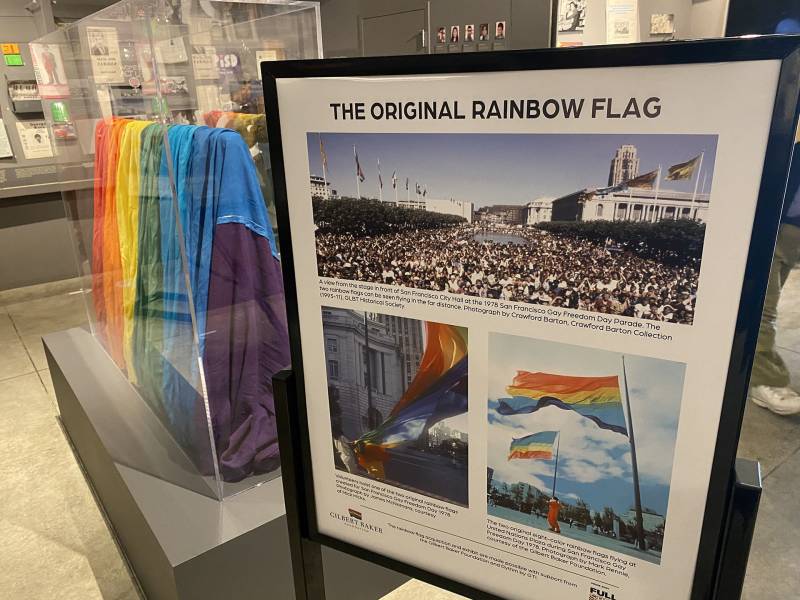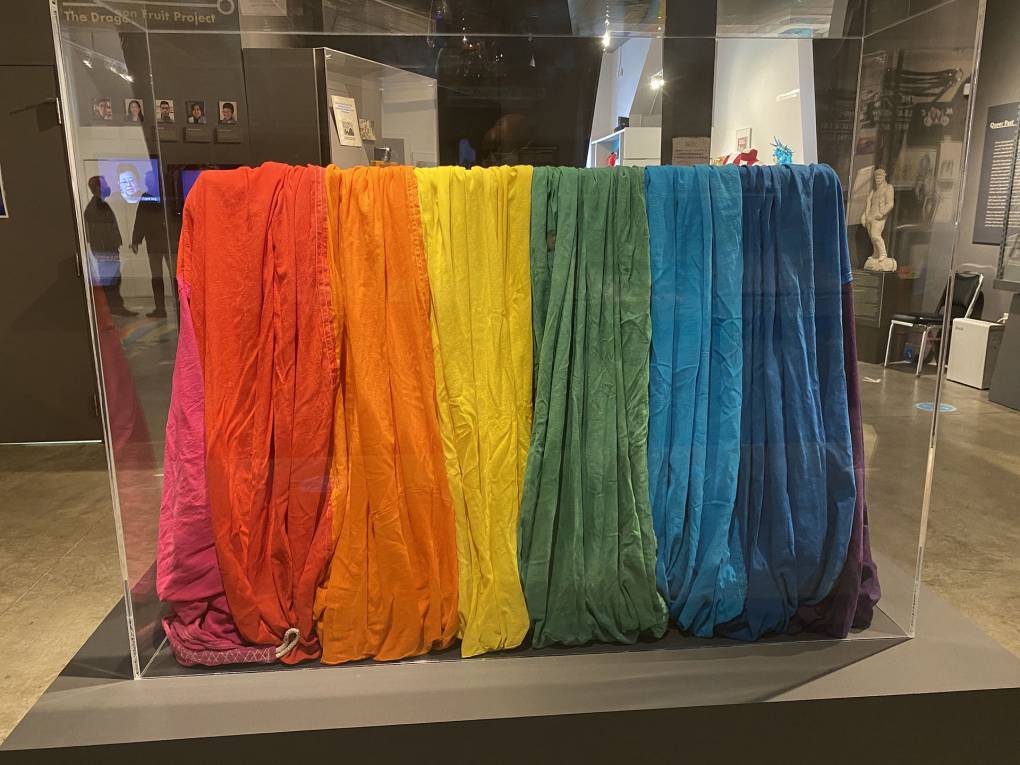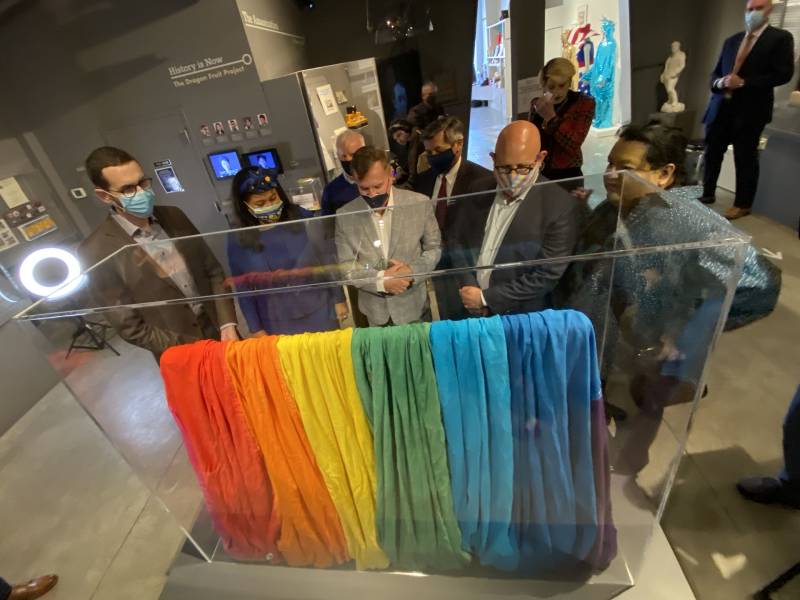The original 1978 rainbow flag found itself a home on Friday in the heart of San Francisco’s Castro District.
What remains of the original 30 by 60 foot multi-colored flag now lives under glass at the GLBT Historical Society Museum and Archive. Executive Director Terry Beswick says the rainbow flag’s design is iconic and internationally known because it represents hope.
“People hang it in small towns and in countries where they still experience a lot of oppression, but it also has become a political statement to say that we exist, we have the right to love who we want to love and to participate as full members of society,” he said.

The rainbow flag isn’t just colorful lines on a sheet. The eight rows of fabric — violet, indigo, turquoise, green, yellow, orange, red, hot pink — are the brain child of gay activist and artist Gilbert Baker who passed away in 2017. He and a crew of more than 30 people created the first rainbow flag in 1978.
The idea came to Baker after gay activist and politician Harvey Milk told Baker the community needed a new symbol that exudes affirmation, Beswick said.


